At Smartick, we have numerous exercise sequences to learn and practice multiplication. Let’s take a look at some of the beginner multiplication activities in Smartick.
Index
Concept of Multiplication
Multiplication is one of the most fundamental and useful mathematical operations, used in a wide variety of contexts in daily life and science. It is defined as a binary operation that combines two numbers, called factors, to produce a third number, called the product, and is commonly represented by the symbol “x”, “·” or “*”.
For example, if we want to multiply 3 by 4, we write 3 x 4 = 12. In this case, 3 and 4 are the terms we multiply, and 12 is the product.
Multiplication can be understood in different ways. For example, it can be seen as a shortcut for adding a number to itself several times. For example, 3 x 4 can be understood as 3 + 3 + 3 + 3, which equals 12.
Here you can learn more about multiplications and how to solve them.
Multiplication also has several important properties that are important to know:
- Commutative property: the order of the terms does not affect the result.
- Associative property: the grouping of the terms does not affect the result.
- Distributive property: multiplication can be distributed over addition and subtraction.
Multiplication Activities on Smartick
Fundamentals of Multiplication
Before introducing the concept of multiplication, it is crucial to lay the foundation by exploring fundamental concepts that set the stage for deeper understanding. Addressing pre-multiplication skills is essential to building a solid foundation in mathematics. Some of these preliminary concepts include:
- Doubling and Halving: Understanding doubling and halving of a quantity is essential. Working with exercises involving doubling (double) or halving (half) helps students understand how numbers are related to each other.
- Counting in Series: Practicing counting in specific sequences, such as 2 by 2, 3 by 3, etc., provides a gradual introduction to the idea of grouping items. This approach subtly lays the foundation for multiplication by teaching students to recognize number patterns and numerical relationships.
By working with these pre-multiplication concepts, students not only acquire fundamental number skills, but also develop the ability to recognize patterns and understand relationships between numbers. This solid foundation facilitates the transition to multiplication, enabling students to approach this operation with valuable prior knowledge and a deeper understanding of the underlying mathematical principles.
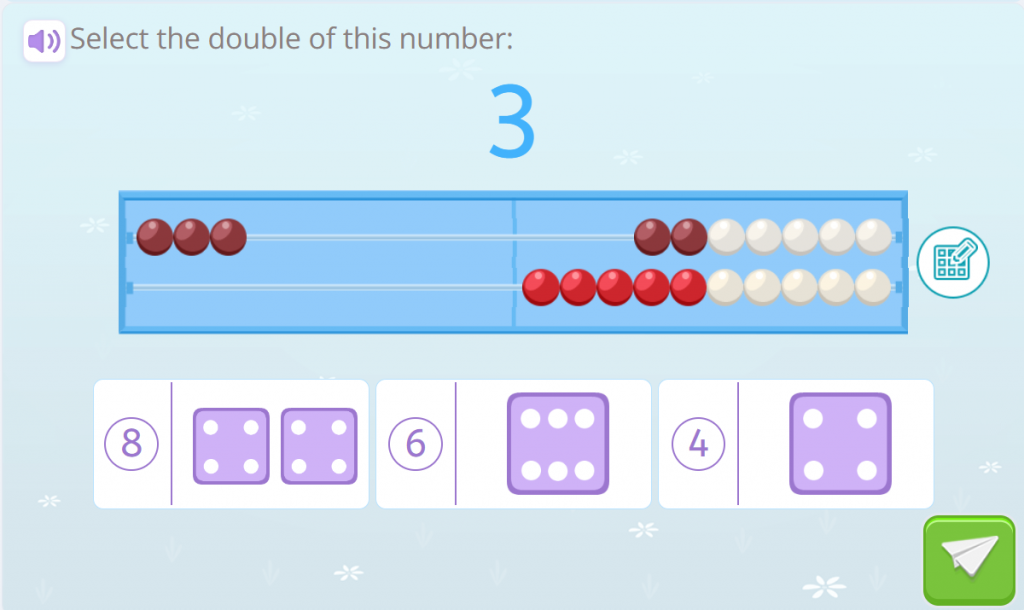
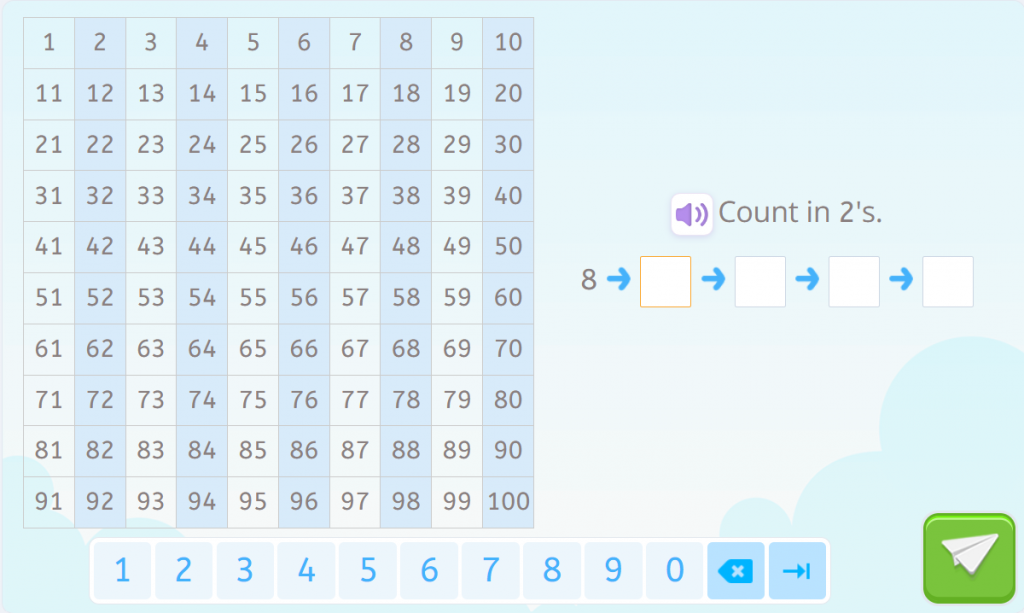
Activities on the Concept of Multiplication
In these types of exercises, we focus on exploring various perspectives to understand multiplication, aiming to achieve a deeper knowledge of the process behind this mathematical operation. By approaching multiplication in different ways, children not only memorize results but also gain a more comprehensive understanding of how multiplication works and how it can be applied in more complex situations in the future. Different ways of understanding multiplication include:
- Repetition as Addition: Multiplication is presented as a shortcut for adding a number to itself several times. For example, 3 x 4 can be understood as the sum of 3 + 3 + 3 + 3, which equals 12.
- Group Models: We introduce the concept of groups in multiplication activities to help with understanding. In this approach, it is emphasized how multiplication can represent the formation of equal groups. For example, if we want to form groups of 3 with 4 elements each, we get 3 x 4 = 12, representing the creation of 4 groups of 3.
- Use of Visual Models: Visual models, such as area diagrams or matrices, are introduced to visually represent multiplication. Thus, with a rectangular representation, we can see that multiplication involves counting all the elements in an area
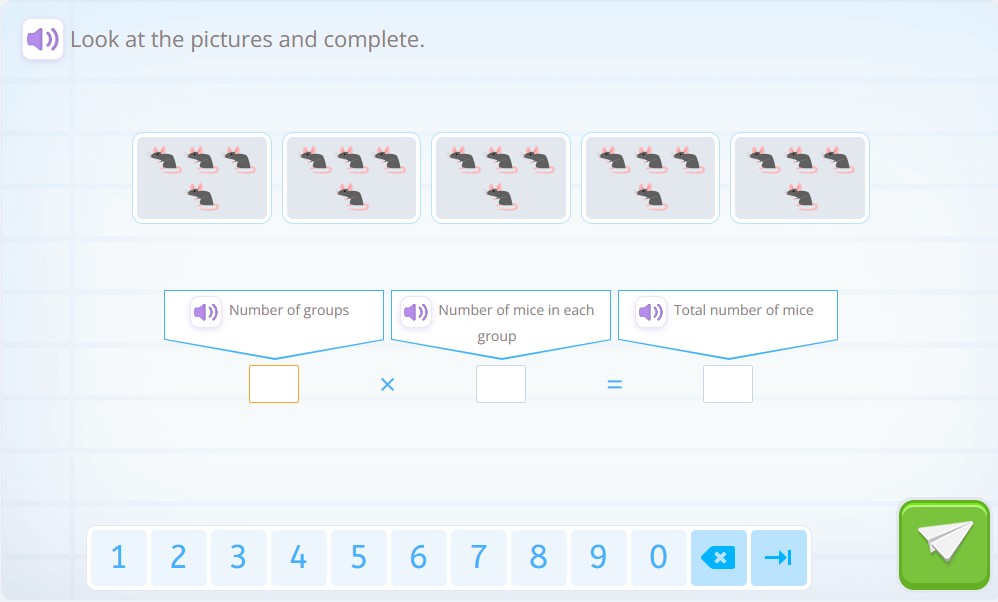
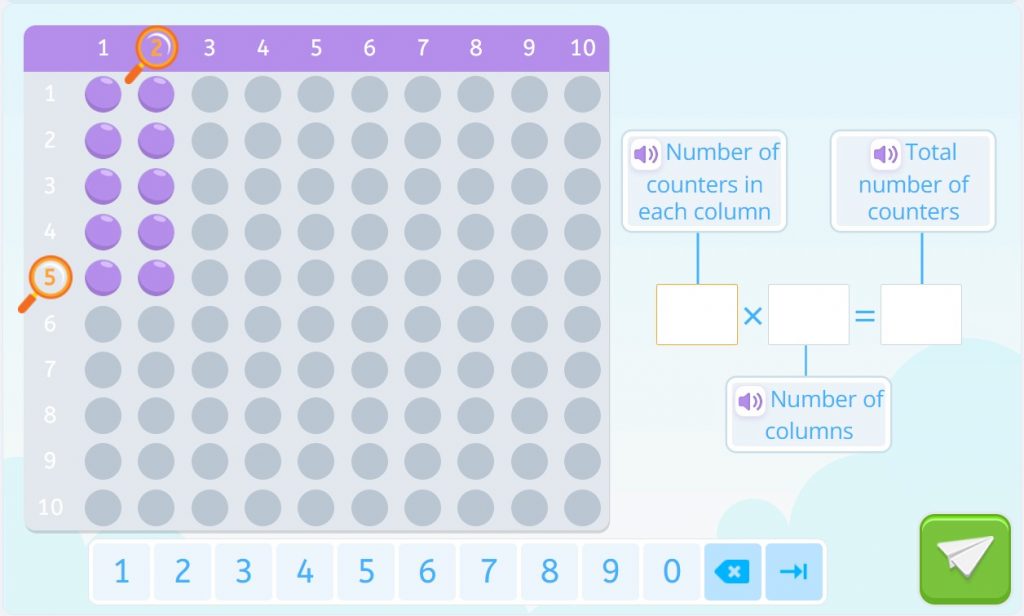
Activities on Multiplication Tables
It’s not enough to understand the concept of multiplication; one must also achieve speed in solving simpler multiplications to be able to perform more complex mathematical processes. Therefore, it is necessary to build the multiplication tables and then practice extensively with multiplication table activities to attain the highest possible fluency.
In this process, it’s important to also work on flexibility and comprehension, so that we have the tools to calculate the result of a multiplication for which we don’t yet know the answer by heart.
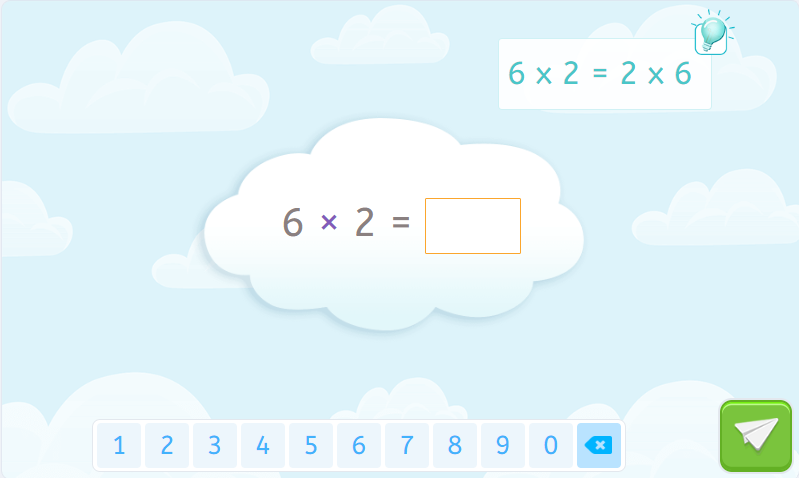
Multiplication Problems
Problems are a fundamental part of learning and solidifying a concept because this is where we truly see how useful they are and are able to relate the concepts learned in other situations. In Smartick’s multiplication problems, we present situations where multiplication is the key tool to find the solution. These types of multiplication activities, being related to real-world concepts, help children apply multiplication to practical situations and develop problem-solving skills.
Video Tutorial on the Concept of Multiplication
To do multiplication activities, it is important that you first understand the concept of multiplication. In this video tutorial, you will learn alongside Max and Otto how to multiply in a very simple way and to understand the concept of multiplication.
Also, if you want to practice with these multiplication activities and many more exercises, try Smartick and… you will surely become a master of multiplication!
Learn More:
- Multiplication Tables: How to Work Them out Using a Grid
- What is Dyscalculia and How Can It Be Treated
- Practice Length Measurement Problems
- Completing Additions, Subtractions, Multiplications and Divisions
- Solve and Analyze Numerical Place Values
- The Language of Functions and Graphs - 07/01/2024
- Educational Technology: The Christodoulou Test - 05/06/2024
- Multiplication Activities in Smartick - 04/09/2024







